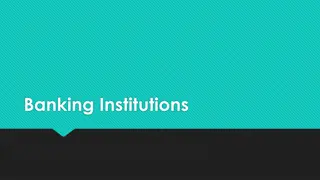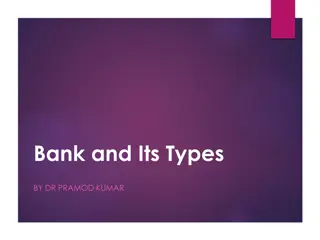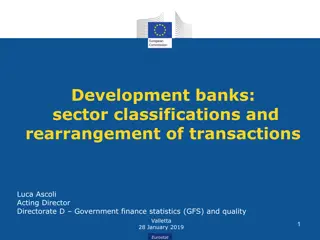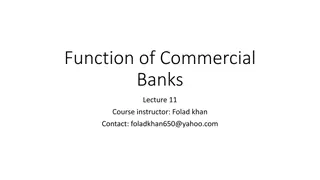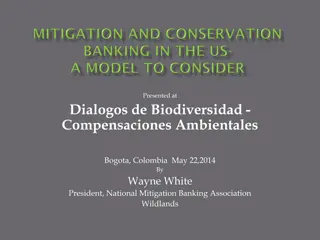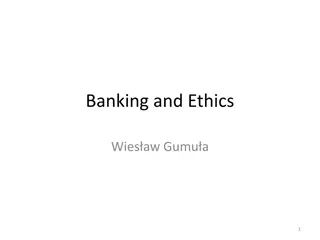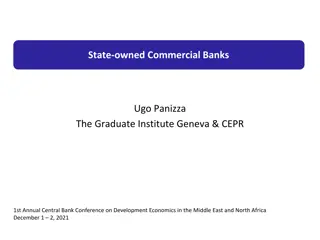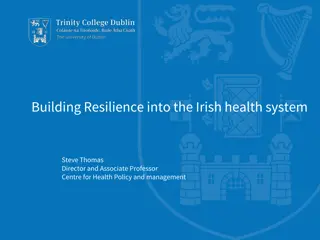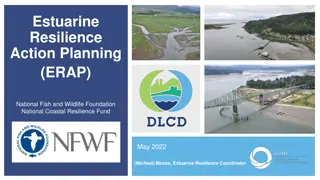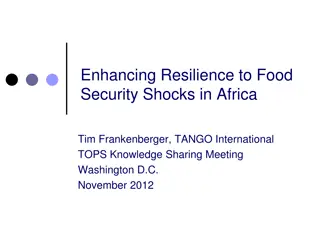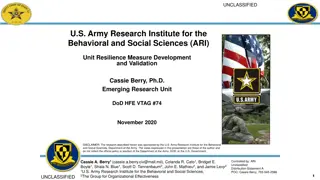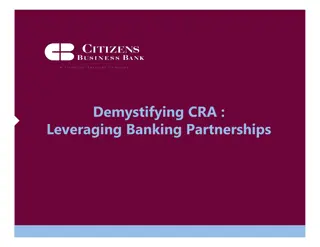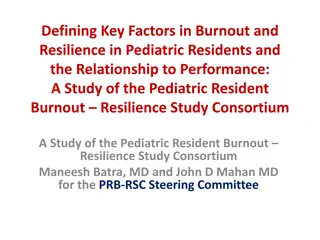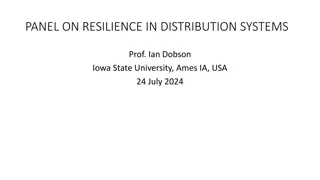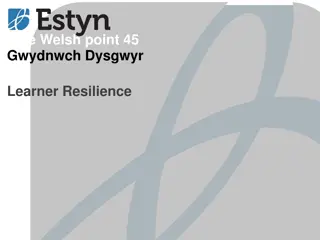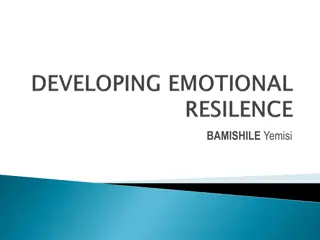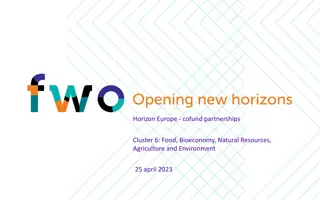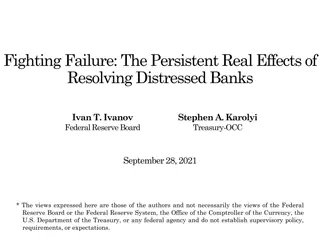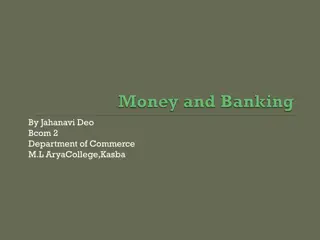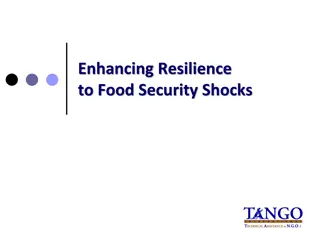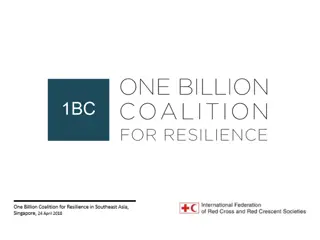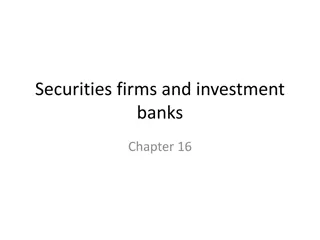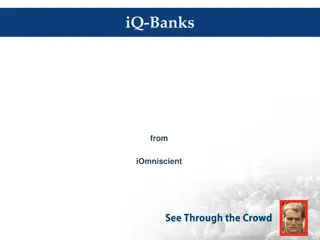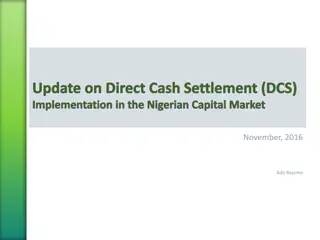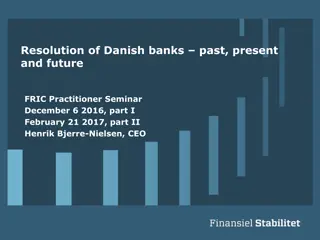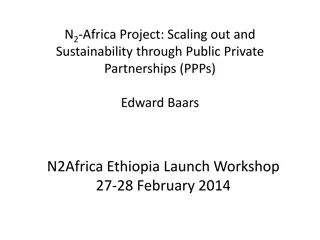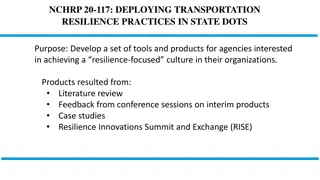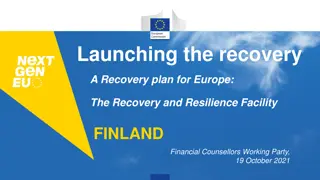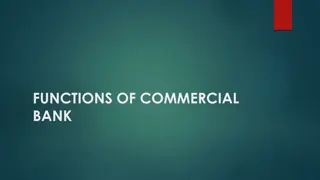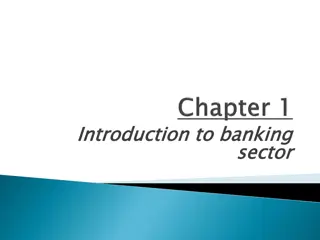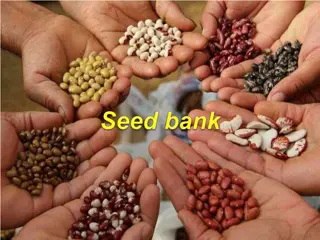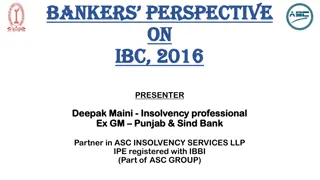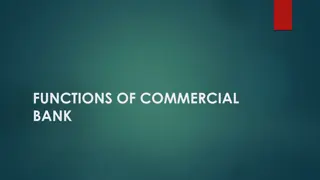Enhancing Agriculture Resilience: World Bank's Impact through Government Partnerships
Agriculture insurance plays a crucial role in mitigating the negative impacts of production shocks on various stakeholders. The World Bank has been actively supporting agriculture insurance programs since 2005, emphasizing the importance of strong public-private partnerships. Recent engagements in countries like Senegal, India, and Kenya highlight the value of these initiatives in addressing food insecurity, reducing income volatility, and improving access to credit for farmers. The collaboration between the World Bank and governments, such as in India, has transformed publicly implemented insurance programs into successful public-private partnerships, benefiting millions of farmers and enhancing fiscal management.
- Agriculture resilience
- World Bank
- Government partnerships
- Agriculture insurance
- Public-private partnerships
Uploaded on Oct 09, 2024 | 0 Views
Download Presentation

Please find below an Image/Link to download the presentation.
The content on the website is provided AS IS for your information and personal use only. It may not be sold, licensed, or shared on other websites without obtaining consent from the author. Download presentation by click this link. If you encounter any issues during the download, it is possible that the publisher has removed the file from their server.
E N D
Presentation Transcript
World Bank work with Governments in Agriculture Index Insurance GIIF conference Fatou Assah Program Coordinator, WBG September 2015
Table of contents 1. Agricultural insurance can help Governments address the negative consequences of agriculture production shocks 2. Since 2005, the WBG has supported agriculture insurance program, which have highlighted the need for strong Public Private Partnerships India Mongolia 3. More recent engagements on agriculture insurance Senegal West Africa CIMA Kenya 4. Conclusion
Agricultural production shocks generate negative impact for a variety of stakeholders Agriculture shocks Government Financial institutions Farmers Most vulnerable populations Contingent liabilities arising from agriculture shocks (post disaster assistance) Food insecurity Ex-post: Reduced income Ex-ante: Reduced incentives to invest in seeds and fertilizers Reduced access to credit Ex-post: Non-performing agriculture loans Ex-ante: Constraints to expansion of agriculture credit to farmers Home
The WBG has assisted the Government of India in transforming the publicly implemented insurance program into a PPP INDIA -30 years 20% of farming households are covered 1999: Initial Public program (NAIS*) 2010: New PPP (mNAIS and WBCIS*) Benefits 25 million farmers covered 1 Lower fiscal exposure More predictablebudget Faster claims settlement Financing arrangement Ex-post financing arrangement Ex-ante financing arrangement 2 Claims settlement process Faster claims settlement Lower basis Risk Indices based on combination of CCEs, weather and remote sensing data Crop cutting experiments (CCEs) 3 Lower adverse selection Better risk-signaling and incentives to adapt to climate change Simple calculation of premiums not reflecting actual risk exposure Actuarial design and ratemaking covering longer historical time periods Premiums 4 Involvement of private sector No private sector involvement Private competes with public insurer Enhanced efficiency *NAIS: National Agriculture Insurance Scheme - mNAIS: Modified NAIS *WBCIS: Weather Based Crop Insurance Scheme Improved fiscal management and increased farmer welfare Home
The WBG has assisted the Government of Mongolia in setting up a PPP in Livestock Insurance MONGOLIA-10 years 16% of herders covered High vulnerability to extreme climatic conditions: 30% of the population are semi-nomadic herders and 33% below the poverty line Large fiscal burden for the Government as a result of livestock mortality risk Low access to credit for herders Challenge The The World Bank assisted the Government in developing an ex-ante risk financing arrangement that: Provides herders with immediate liquidity after a disaster; Transfers part of the government s fiscal exposure to climatic risks to the international reinsurance market Response The 10-20% of herders insured in target locations Payouts amounting to more than US$1.3 million were triggered during the 2009-2010 season, when 22% of the country s livestock died during the harsh winter. Impact The Home
Agricultural insurance programs that have scaled up build on strong public and private sectors Typical examples: India Mongolia Sustainable, scaled up agricultural insurance Public sector innovation and action Private sector innovation and action On a global basis, only 7% of transaction volume is purely private Agricultural risk assessment Home
Governments can support agriculture insurance through a variety of interventions Data Outreach Risk Financing Link to social safety nets Collect Public sector reinsurance Link to credit Audit Premium subsidies Promote coinsurance pool Manage Awareness building Financial support Support product design and development Enabling environment Product development and pricing (short run) Institutional framework Legal framework Technical support for insurers (long run) Consumer protection Home
Senegal Case Study: PPP at work Agricultural Insurance program implementation supported by several public entities: Ministry of Finance Insurance regulatory agency - DA National meteorological service - ANACIM MOFA and its statistical, research and extension departments Areas of support by the GoS Provide an enabling environment, government policy, legislation and regulation Agricultural insurance underwriting delivered through a sound PPP principle Data and services Long term investments in agricultural development with safety net programs hosted by the national agricultural bank CNCAS Financial strength with premium subsidies and tax exemption 8 Home
In Senegal, support to data, outreach, and product design has allowed index insurance to achieve significant results SENEGAL-3 years Groundnut producers Groundnut seed producers Agriculture insurance Access to credit Increased production Increased productivity Increased seed stock Increased agriculture productivity Increased food security 13% 13% of groundnut seed of groundnut seed producers are covered producers are covered Indirect impact on more Indirect impact on more than than 500,000 rural 500,000 rural households households producing producing groundnut groundnut Insurance coverage after 3 years of pilot 5% 5% of rural households in of rural households in the pilot site are covered the pilot site are covered Home
Regulatory Framework development: GIIF support yielded major milestones in Africa CIMA Book VII , enacted in 2012, allows and regulates the development of MI and Index Insurance in 14 Francophone African countries. Support also provided to national insurance supervision agencies, in particular, the Senegalese and Benin Insurance Supervision Agency with the development of supervisory and customer protection tools for index insurance Full scale implementation of the regulation in the CIMA zone also ongoing in Benin, Burkina Faso, Mali, Cameroon and Cote d Ivoire WEST AFRICA Country Activity/Output Kenya Preliminary review of the legal and regulatory framework of the country completed SOUTHEAST AFRICA CENTRAL, EAST & Uganda Preliminary review of the legal and regulatory framework of the country completed Rwanda Request for GIIF technical assistance submitted by MINAGRI under review : upscale of the regulatory and supervisory insurance framework Mozambique Formal request GIIF technical assistance received from the GoM Source: GIIF Knowledge notes Home
Government of Kenya is using a range of mechanisms to ensure financial protection for all vulnerable livestock producers Income Level Livestock Safety Net and Insurance Program Cost Share KENYA Above Unsubsidised livestock insurance 100 % of premium covered by farmers Low Income Partial premium cost sharing Subsidised livestock insurance Government purchases livestock insurance for pastoralists above social protection threshold vulnerable Premium 100 % subsidized Chronically vulnerable Cost 100 % subsidized Social protection 11 11 Home
Conclusion Agriculture index insurance can be a useful tool for Governments to protect their vulnerable populations, enhance access to credit, and better manage their fiscal expenditures associated with disasters Governments can support agriculture insurance through a variety of interventions beyond premiums subsidies The WBG has assisted various Governments in designing and implementing agriculture insurance PPPs that leverage both public and private sector stakeholders. Some of the lessons learnt of our engagements are: Scaled-up ag insurance programs require strong support from Government Agriculture insurance cannot on its own - deliver impact on access to credit and increased productivity Agriculture insurance requires an adequately regulated and supervised insurance sector and index insurance sector Home



